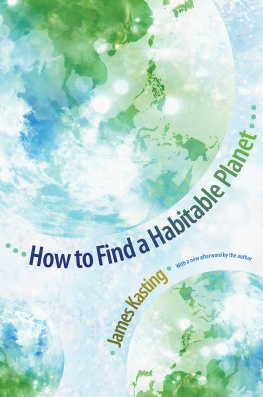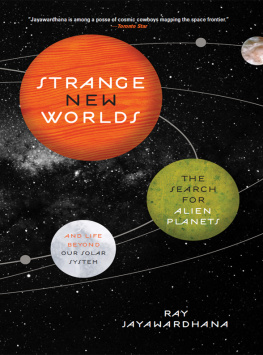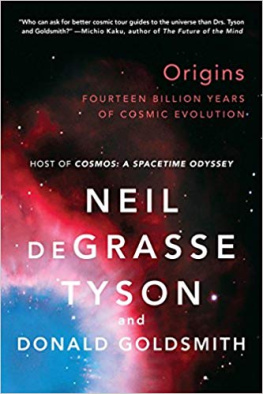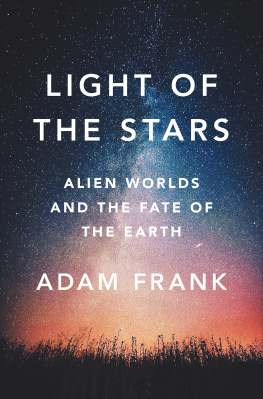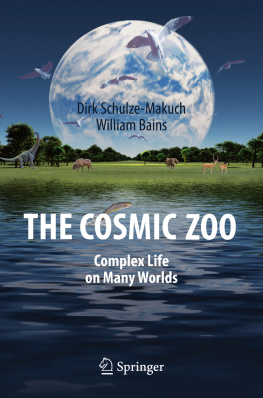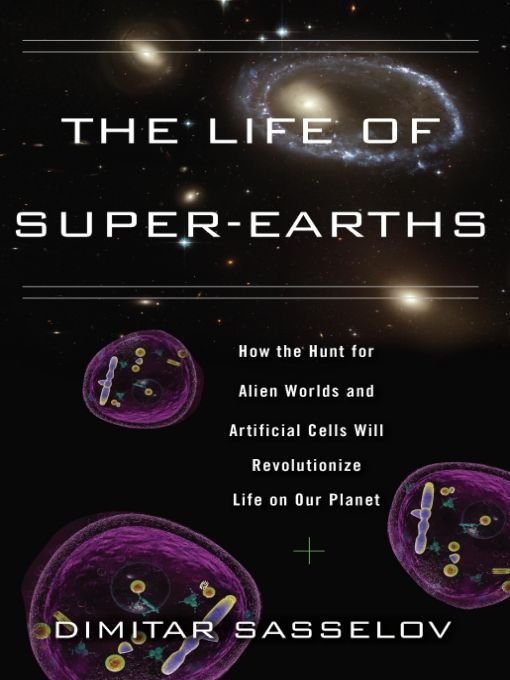Table of Contents
ACKNOWLEDGMENTS
This book grew out of the general education lecture course, Life as a Planetary Phenomenon, that my colleague Andrew Knoll and I designed and have taught together at Harvard since 2005; I am much indebted to Andy for encouraging and teaching me along the way.
My book introduces a general audience to new ideas on old big questions about life and the cosmic perspective on life. These questions formed the foundation for the research agenda of the Harvard Origins of Life Initiative and its core team of scientistsI thank my colleagues for the amazing collaboration and for teaching me what little I know in their fields. In particular, I owe much to Jack Szostak for being a great teacher and partner from the very beginning; to Andy Knoll and my late friend Mike Lecar for getting me into this in the first place; to George Whitesides for his wise advice about chemistry and much more; to Stein Jacobsen, Scot Martin, George Church, Ann Pearson, Rick OConnell, David Latham, and Sarah Stewart for pushing the boundaries. I was inspired by the books of Erwin Schroedinger and Freeman Dyson and by the brave experiments of Gerald Joyce and Craig Venter, and many others; I apologize to all whose contributions are not mentioned in my short book.
My goal was to write a popular book because the new science concepts are truly wonderful and exciting, and because they have immediate implications for all of us. My approach was to provide a thorough introduction in order to make the science accessible, followed by my own views on the unanswered questions, and keeping the technical details to the endnotes only. Thanks to John Brockman and Katinka Matson my book took the right path toward that goal; my agent Max Brockman made sure the project was accomplishedI owe them a lot for their guidance and support.
The road from lab to paper and to readable prose is torturous; I was incredibly lucky to have TJ Kelleher as my editor, from the first meeting years ago to the final touches. He understands the science and he is a talented writer! My friend Peter Abresch helped me with the baby steps and showed me, in my first chapter, how to write well. To both of them I am very grateful, as I am to Andy Knoll for his critical reading of the biology-related chapters of the book. The beautiful and intelligent illustrations are the work of gifted artists Sandra Cundiff and Michael Hardesty, and I am very grateful to them.
My deepest thanks are due to my family because this book would not have come to be without their encouragement, patience, and support: to my dear parents whom I owe for who I am and what I can do, and to my dear wife, Sheila, for being by my side throughout the entire process.
INTRODUCTION
The Mystery of Life
There are few big questions that rival this one: What is life and how did it come to be? It has always been a big question, though not always for science alone. And there have always been numerous models, scenarios, speculations, and ideas offered in responsemost of them not terribly successful. The middle of the nineteenth century was no different. But some samples of slimy mud scooped up from the depths of the North Atlantic along the route of a telegraph cable would change that.
The year 1857 could be celebrated as the time humanity took the first practical step to create a global world on this planetthe global-awareness world we live in today. Converted British and American warships laden with rolls of cable were laying the first intercontinental telegraph connection on the bottom of the Atlantic Ocean between Europe and America. The human timescales of news traveling on foot or by horse or by pigeon were giving way, ultimately to be replaced by instantaneous communication at the speed of light. Days and weeks were being replaced by hours and minutes. It seemed as if the oceans that had separated humans for millennia had suddenly dried up, as newspapers at the time wrote.
In preparation for laying the telegraph cable, ships like HMS Cyclops and USS Arctic were sounding the Atlantic Ocean floor and sampling the ocean bottom. In 1868 Thomas Henry Huxley, an English biologist with major achievements in comparative anatomy (although better known today for his role as a popularizer of Darwins theory of evolution), discovered among the samples taken from the Atlantic a substancegelatinous, colorless, and formlessthat he thought was a new life-form. Not just any life-form, Huxley thought, but the primordial organic substance, the undifferentiated protoplasm from which life originates.
It was an audacious idea for a heady time in the quest to understand life and its origins, and Huxley was in the middle of it all. First, in 1859 Charles Darwin published his seminal On the Origin of Species, and the theory of evolution had become a topic of broad and heated debate. Then, between 1860 and 1863, Louis Pasteur completed his famous experiments with sterilization. Between them, long-held concepts about the origin of life were being completely upended.
Before Darwin and Pasteur, Western science had attempted to explain lifes origins through a combination of spontaneous generation and vitalism. Spontaneous generation was the idea that life emerges from decomposing matter, the latter being imbued by a vital force (common to all organic material, and the air as well). Vitalism was already under attack from chemistry. In its early development, chemistry had separated inorganic compounds from organic ones, the latter being erroneously assumed to derive from living forms only. Once an organic compound was synthesized in a laboratory in 1828, the need for a vital force was on its way out (although organic chemistry still keeps its name).
The fallacy of spontaneous generation had been exposed in experiments involving extensive boiling of meat broths before Pasteur, but his elegant experiments allowed access to air and thus proved that life emerges only from life. The long, sharply curved swan-neck flasks that he used to boil the broth prevented germs (i.e., bacteria and spores) from entering the sterilized liquid but still let in air. It appears that Pasteur convinced everyone.
None of that could help scientists understand lifes origin, except that now they could clearly state the problem. Both Pasteur and Darwin described the origin as a single act of abiogenesis: that the first life-form emerged from inanimate matter, which happened just once. For Pasteur it was an act of Gods creation, while Darwin left it to a warm little pond, according to a letter he wrote in 1871.
Against this backdrop, it is no wonder that Huxley thought he had something big on his hands. Indeed, he named the discovery Bathybius haeckelii, for the German biologist Ernst Haeckel, who had recently proposed that all life descended from a primordial ooze that he called Urschleim. Indeed, Huxley was convinced that he had found the Urschleim, and the discovery helped prompt the dispatch of the HMS Challenger on a systematic exploration of the depths of the world oceans. No trace of Bathybius haeckelii, or Urschleim, was found; instead, the chemist aboard the ship found that Huxleys curious substance was simply a chemical precipitate (a hydrated calcium sulfate). In 1875 Huxley acknowledged his error.
The hunt for beginnings has never ceased, despite Huxleys error. The twentieth century had its share of milestones and conceptual breakthroughs, though sometimes they felt like a replay of nineteenth-century events but at the molecular level: the germs and microbes were replaced with the molecules of life, but the mystery surrounding life remained.


